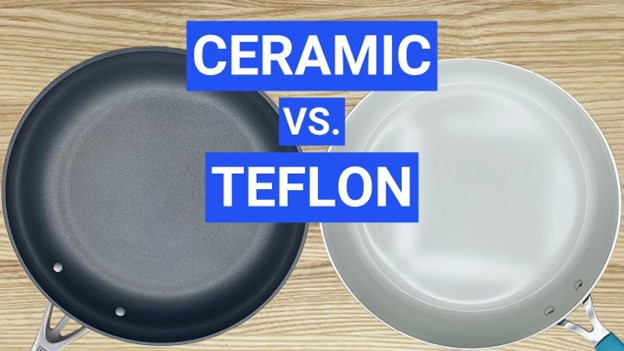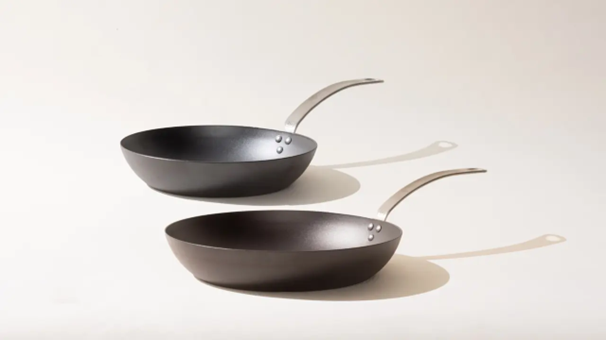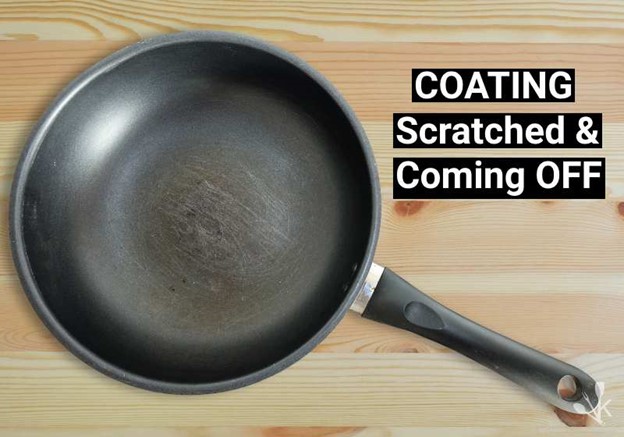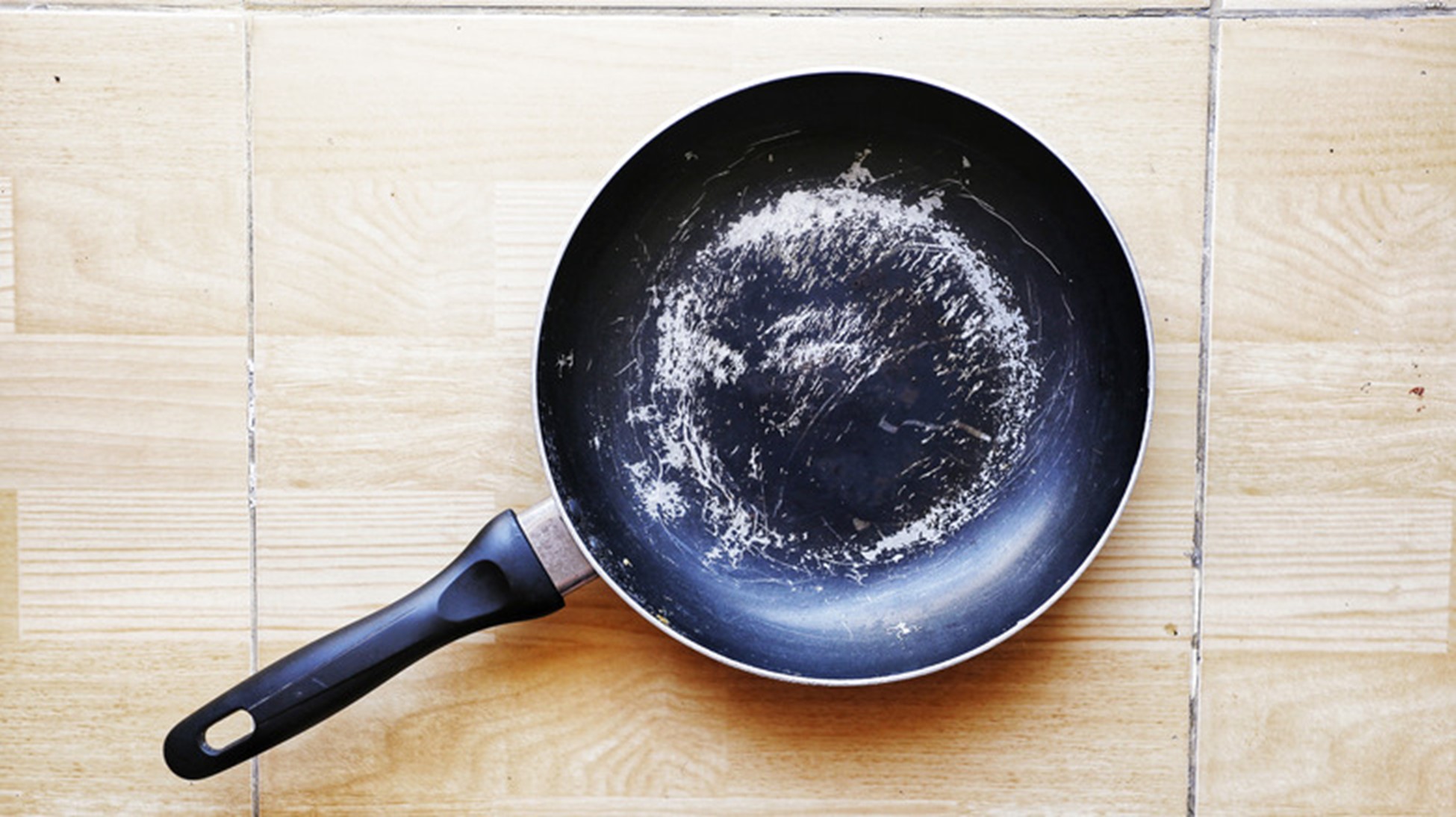The Story On Nonstick Pans
Hannah Crowley, an executive editor for America’s Test Kitchen and researcher for kitchen tools and appliances reminded us this past August that nonstick pans don’t last forever. With that said, she had some great information on how to know when it’s time for a new one.

According to the folks at the Test Kitchen, ten years ago, the life expectancy of a nonstick pan was two to three years. But today non-stick pan technology has greatly improved. Now we can expect five to seven years from a pan with a quality coating.
All that said, it actually boils down to how you treat your nonstick pan. That’s what will ultimately determine how long it lasts.

Neither traditional PTFE (polytetrafluoroethylene, a coating of plastic that’s sprayed and then baked to a nonstick, waterproof, noncorrosive, and nonreactive surface), nor ceramic (often called “green”) nonstick pans will last as long as a cast-iron, carbon-steel, copper, or stainless-steel pan.
This is because what makes a nonstick pan not stick is a thin layer covering the cooking surface. This thin layer is a layer of plastic on the traditional pans and a glass-like ceramic material on the ceramic pans. The Test Kitchen research shows neither is really better than the other. It’s about personal preference.
It’s important to understand that no nonstick pan lasts forever. While ceramic pans typically wear faster, both styles are fallible and will lose their nonstick ability over time.

This is why Hannah and the other Test Kitchen researchers don’t recommend spending a lot on a nonstick skillet and why they tell folks interested in cooking on a nonstick surface to consider carbon steel or cast iron instead. Both of these, with some minor maintenance, will become naturally nonstick over time.
And here’s Hannah’s environmentally friendly note: “Technically you can recycle a nonstick pan but you have to strip the nonstick coating off first, which isn’t practical for most folks. For this reason, we recommend buying a pan with a quality coating and treating it right to minimize your environmental impact.”

So, how do you know when it’s time to replace your nonstick pan? Here’s guidance from the Test Kitchen. They say to look for three telltale signs.
COATING THAT’S FLAKING. Not for safety reasons—the coating won’t interact with your body and will pass right through if accidentally ingested. (This is why nonstick is used to coat surgical implants and sutures.) Instead, it’s about practicality—it’s simply unpleasant to eat bits of coating. Once it’s started chipping, it will likely continue to chip because of the way the nonstick layer is bonded to the pan. These days, chipping is more common in ceramic nonstick pans.

COATING THAT’S DEEPLY SCRATCHED AND DRY. It’s true, if the coating is scratched, the pan may still be usable. But you’ll see more sticking, especially if the scratches are deep. If the surface is looking whitish and dry, it’s likely that the nonstick coating has worn away to an extent that will make it quite clingy. While you can always use extra fat to avoid sticking, that defeats the purpose of a nonstick pan. Right? So, if you’re constantly struggling with it, it's probably time for a new pan.

EVERYTHING IS STICKING. If food consistently sticks, try this before tossing the pan: Warm it over low heat for 30 seconds, swipe a teaspoon of a neutral oil (like canola) around with a cloth or paper towel, rubbing it all over the skillet interior. You’ll be seasoning it like you do a cast-iron skillet. If this helps, bravo! If it doesn’t, it’s truly time for a new pan.

According to the folks at the Test Kitchen, ten years ago, the life expectancy of a nonstick pan was two to three years. But today non-stick pan technology has greatly improved. Now we can expect five to seven years from a pan with a quality coating.
All that said, it actually boils down to how you treat your nonstick pan. That’s what will ultimately determine how long it lasts.

Neither traditional PTFE (polytetrafluoroethylene, a coating of plastic that’s sprayed and then baked to a nonstick, waterproof, noncorrosive, and nonreactive surface), nor ceramic (often called “green”) nonstick pans will last as long as a cast-iron, carbon-steel, copper, or stainless-steel pan.
This is because what makes a nonstick pan not stick is a thin layer covering the cooking surface. This thin layer is a layer of plastic on the traditional pans and a glass-like ceramic material on the ceramic pans. The Test Kitchen research shows neither is really better than the other. It’s about personal preference.
It’s important to understand that no nonstick pan lasts forever. While ceramic pans typically wear faster, both styles are fallible and will lose their nonstick ability over time.

This is why Hannah and the other Test Kitchen researchers don’t recommend spending a lot on a nonstick skillet and why they tell folks interested in cooking on a nonstick surface to consider carbon steel or cast iron instead. Both of these, with some minor maintenance, will become naturally nonstick over time.
And here’s Hannah’s environmentally friendly note: “Technically you can recycle a nonstick pan but you have to strip the nonstick coating off first, which isn’t practical for most folks. For this reason, we recommend buying a pan with a quality coating and treating it right to minimize your environmental impact.”

So, how do you know when it’s time to replace your nonstick pan? Here’s guidance from the Test Kitchen. They say to look for three telltale signs.
COATING THAT’S FLAKING. Not for safety reasons—the coating won’t interact with your body and will pass right through if accidentally ingested. (This is why nonstick is used to coat surgical implants and sutures.) Instead, it’s about practicality—it’s simply unpleasant to eat bits of coating. Once it’s started chipping, it will likely continue to chip because of the way the nonstick layer is bonded to the pan. These days, chipping is more common in ceramic nonstick pans.

COATING THAT’S DEEPLY SCRATCHED AND DRY. It’s true, if the coating is scratched, the pan may still be usable. But you’ll see more sticking, especially if the scratches are deep. If the surface is looking whitish and dry, it’s likely that the nonstick coating has worn away to an extent that will make it quite clingy. While you can always use extra fat to avoid sticking, that defeats the purpose of a nonstick pan. Right? So, if you’re constantly struggling with it, it's probably time for a new pan.

EVERYTHING IS STICKING. If food consistently sticks, try this before tossing the pan: Warm it over low heat for 30 seconds, swipe a teaspoon of a neutral oil (like canola) around with a cloth or paper towel, rubbing it all over the skillet interior. You’ll be seasoning it like you do a cast-iron skillet. If this helps, bravo! If it doesn’t, it’s truly time for a new pan.
 Alice Osborne
Alice Osborne
Weekly Newsletter Contributor since 2006
Email the author! alice@dvo.com
